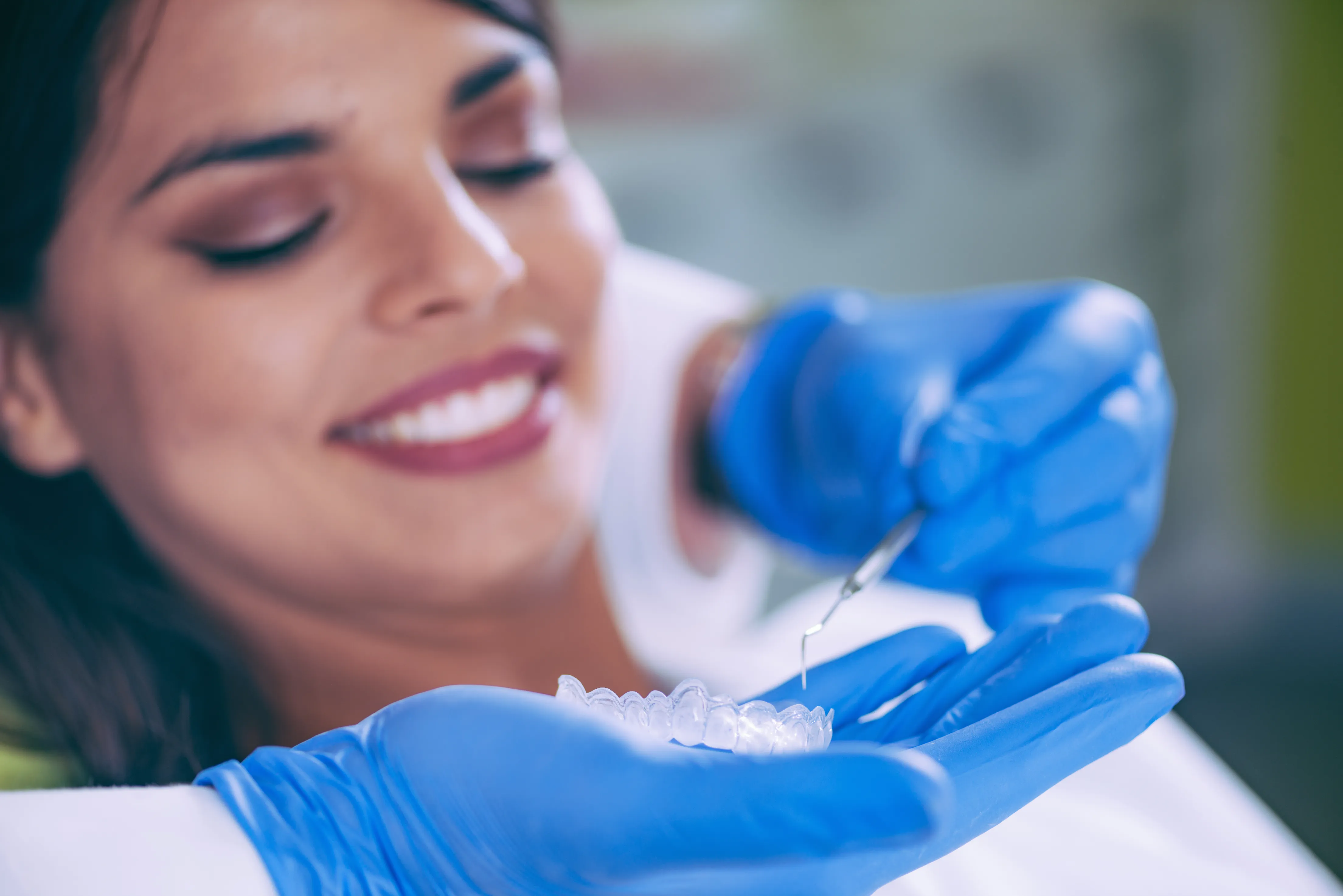Tooth whitening is an effective method of lightening the color of one’s teeth by removing stains that accumulate both externally (extrinsic stains) and internally (intrinsic).
Your dentist typically employs hydrogen peroxide solution or carbamide peroxide gel for its safer properties to achieve satisfactory whitening. Treatment typically lasts an hour a day over two weeks until desired results have been reached.
Procedure
Teeth whitening is a widely utilized cosmetic dental procedure, used to remove stains and discolorations to brighten the appearance of teeth. For treatment, patients’ teeth are coated with bleaching gel for 30-60 minutes at a time before their dentist uses light therapy to speed up or boost chemical reactions that break apart stain molecules, further whitening teeth.
Tooth whitening can be done either at the dentist’s office, at home with professional bleaching kits or by using whitening toothpaste. Professional in-office whitening is often considered the safest and most effective way to reduce yellow hued teeth and enhance one’s smile; using higher concentrations of hydrogen or carbamide peroxide based whitening agents yielding faster color change compared to over-the-counter bleaching trays or toothpaste whitening agents.
Step one of in-office whitening begins with an extensive examination and evaluation of current tooth shade to ascertain how much bleaching is necessary. Once this step has been completed, an impression of the patient’s mouth will be taken to create a customized tray to use with professional whitening products at home – providing more comprehensive whitening than over-the-counter products that only cover front teeth.
Most teeth-whitening systems involve applying a solution containing 15-35% hydrogen peroxide to coat your natural teeth with. This solution only affects natural enamel; dentin (the yellowish substance inside teeth) will remain unaffected. You’ll remain under supervision by your dentist during several 15-20 minute intervals during which they monitor progress or apply an activating light for activation purposes.
After each whitening session, a dentist will rinse and suction out the whitening gel from your mouth before examining your teeth to measure any color changes. Initial results can often be dramatic with teeth appearing up to eight shades lighter; however, other factors may have an effect such as age, starting color of teeth and susceptibility to staining; while teenage teeth typically lighten significantly; natural yellowing in ones’ twenties and forties often necessitate more extensive procedures for more sustained effects.
An unfortunate side effect of teeth whitening treatments is tooth sensitivity, which usually arises when the whitening gel comes into contact with cracks or leakages in the enamel. In-office bleaching treatments tend to increase this sensitivity due to high concentrations of bleaching agent; mild symptoms should subside with over-the-counter products containing potassium nitrate; however if symptoms persist beyond this, your dentist may advise additional in-office whitening sessions or at-home bleaching trays as solutions.
Preparation
Before beginning whitening treatment, your dentist will carefully examine your teeth to assess the condition and discuss your expectations of the outcome of the process. In general, most individuals can anticipate seeing an average of six to eight shades lighter results after this procedure is complete. In the preparation phase, your dentist will polish your teeth using a pumice tool to remove stains while prepping gums for the whitening solution; after which a barrier will be placed between it and other fleshy parts such as lips or tongue before applying whitening product which will remain for an hour before activation by light or heat (if applicable).
After your teeth whitening session, it’s best to avoid eating or drinking anything that could stain them – such as black tea, coffee, red wine, tomato sauce, yellow mustard and beets – in order to maximize results and prolong results. In addition, smoking could significantly diminish results.
A peroxide-based whitening gel penetrates the porous surfaces of your teeth to dissolve stains through oxidation, using hydrogen peroxide concentrations ranging from 15% to 35% for application directly onto front teeth for maximum effect. As this happens, its pH reduction causes surface demineralization; continuing this process until desired shade has been reached.
There are a number of products designed to facilitate at-home whitening. These may contain bleaching agents, charcoal and bicarbonate of soda. Home whitening kits may be purchased online or from retail stores. Before using any whitening product it is advisable to consult a dentist or dental practitioner in order to make sure they comply with safety and quality standards and follow all instructions regarding use.
As part of your teeth whitening process, you may experience some discomfort or sensitivity in your gums and teeth. While this is normal, desensitizing toothpaste may help ease this discomfort. Desensitizing toothpaste contains ingredients like potassium nitrate and strontium chloride that block pain signals between teeth and nerves, helping reduce post-whitening discomfort. You can purchase this toothpaste in most drugstores and grocery stores for minimal costs that provide maximum comfort. After your whitening appointment, continue brushing with this toothpaste for optimal results; in addition to brushing after each meal you should also rinse out your mouth with water after each meal to flush away any leftover whitening agent that might tarnish or stain your teeth. This will prevent it from drying out your enamel too quickly!
Whitening
An effective tooth whitening procedure typically entails applying hydrogen peroxide or carbamide peroxide bleaching agent directly onto the outer enamel of each tooth for at least one hour, depending on which product is chosen. These bleaching agents work by breaking down chromogens that make teeth appear darker, oxidising them and decreasing pH of tooth surfaces to increase availability of oxygen for hydroxyl groups on enamel surfaces – effectively lightening them over time.
This method of teeth whitening is non-invasive, and can be completed both at home or the dental office. However, to prevent side effects like gum irritation, chemical burns, or tooth sensitivity it should only be performed by trained dental practitioners. Furthermore, this treatment should not be recommended for children or pregnant women.
Before initiating the whitening process, your dentist will take note of your current tooth shade in order to ascertain what extent and concentration level should be applied in terms of bleaching agents and solutions.
At first, the teeth will be carefully scrubbed with pumice to ensure a surface suitable for absorbing the whitening agent. A retractor will then be used to keep lips, tongue and gums away from teeth in order to avoid contamination from this treatment. Meanwhile, during whitening procedure itself, dentists will monitor its progress regularly; in case any gel becomes excessively powerful or has exceeded its effective concentration limits, it will be removed as needed.
Fluoride may be applied following a teeth-whitening session to safeguard against acid damage caused by bleaching. Furthermore, it should be remembered that this procedure only targets outer enamel of teeth and not dentin or crowns.
Tooth staining is caused by multiple factors, including plaque and tartar accumulation; over-stimulated salivary glands; consumption of coffee, red wine and soda beverages; smoking; trauma and aging – these all can erode away at the enamel rods that form teeth, leaving behind porous dentine that absorbs and holds onto stains.
Teeth whitening can restore teeth to their original, natural color and enhance one’s smile by eliminating discolored spots on their enamel. Although its effect will fade over time, its duration can be prolonged by avoiding stain-causing substances such as tobacco products and excessive coffee, red wine and tea consumption. A professional teeth whitening session can dramatically brighten one’s smile and boost self-confidence, and repeated as necessary in order to maintain those results.
Disclaimer: The content on this blog is intended for general informational purposes only. It is not a substitute for professional medical advice, diagnosis, or treatment. Always consult qualified healthcare providers for personalized advice. Information regarding plastic surgery, dental treatment, hair transplant, and other medical procedures is educational and not a guarantee of results. We do not assume liability for actions taken based on blog content. Medical knowledge evolves; verify information and consult professionals. External links do not imply endorsement. By using this blog, you agree to these terms.










